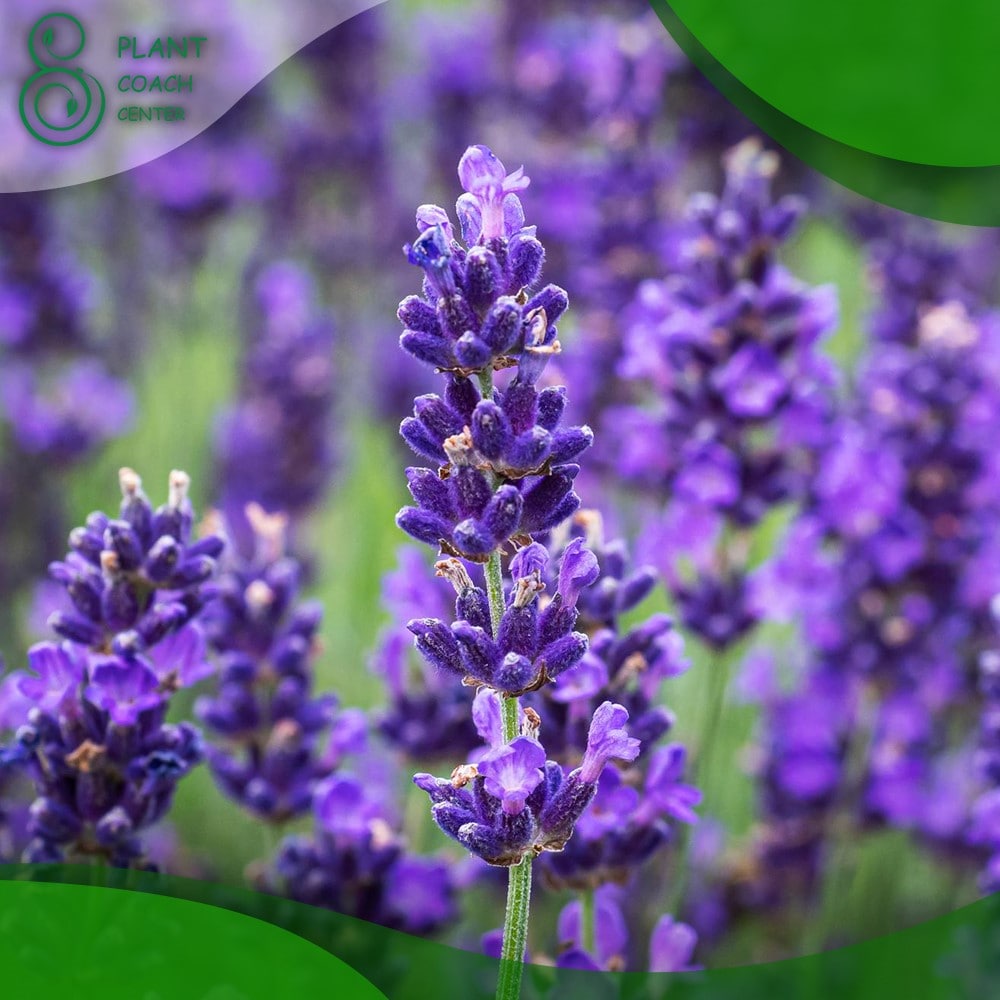Introduction to When to Prune English Lavender
Welcome to our guide on the art of pruning English lavender. In the world of gardening, timing can make all the difference, and when it comes to lavender, it’s no exception. This humble herb, cherished for its fragrant blooms and myriad uses, thrives when pruned at the right time. Whether you’re a seasoned gardener or just starting out, understanding when to trim your lavender can mean the distinction between a thriving, lush plant and a lackluster, overgrown shrub.
In this article of plantcoachcenter.com , we’ll delve into the pivotal role timing plays in the health and vitality of your English lavender. We won’t complicate things with jargon or endless theories. Instead, we’ll equip you with practical knowledge to keep your lavender at its best. So, get your gardening gloves ready and let’s explore the perfect moments to trim your lavender for a garden that’s bursting with fragrance and charm.
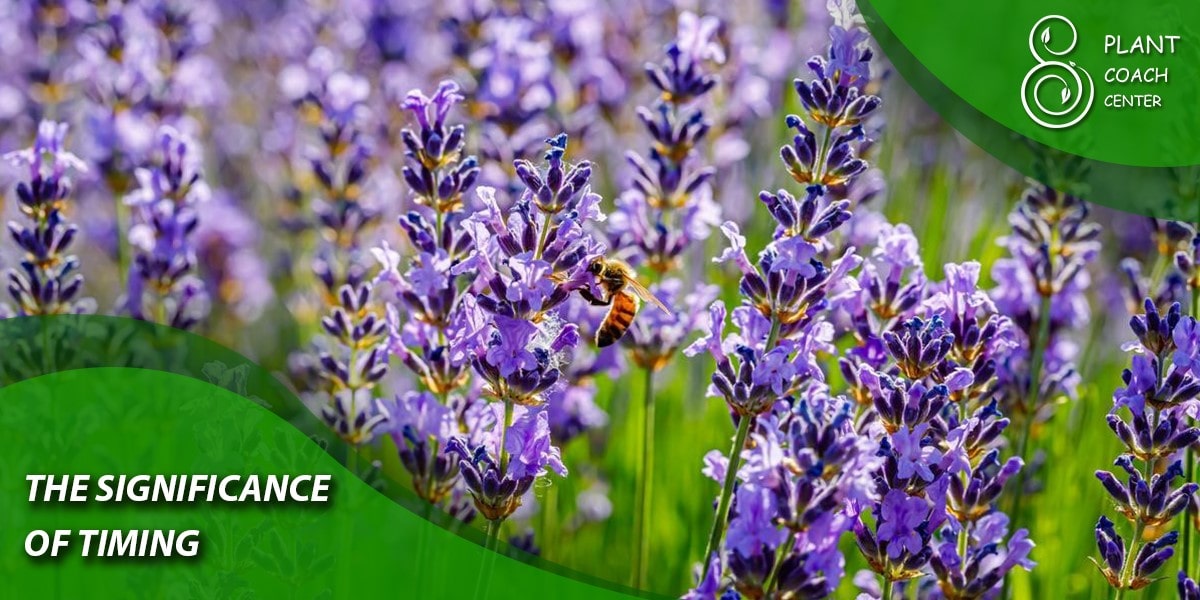
The Significance of Timing
Timing is the backbone of successful English lavender care, and understanding why it matters is key to cultivating a thriving plant.
Why Timing Matters:
When we talk about timing, we’re essentially orchestrating the dance of growth and rejuvenation within your lavender. Pruning at the right time ensures that your lavender remains robust and brimming with vitality. Here’s why it’s crucial:
Encouraging New Growth: Pruning at the appropriate time encourages your lavender to put forth fresh, vigorous growth. This not only leads to a fuller, more aesthetically pleasing plant but also ensures that your lavender continues to produce those delightful aromatic blooms.
Preventing Woody Stems: Untimely pruning can lead to woody, unproductive stems. Timing your pruning efforts correctly helps keep your lavender’s stems tender and productive, filled with the aromatic oils you love.
Timing’s Impact on Growth and Appearance:
Timing doesn’t just impact the health of your lavender; it also shapes how it looks and behaves.
Size and Shape: Pruning at the right time allows you to maintain the size and shape of your lavender plant. Without proper timing, your lavender might grow unruly and lose its well-defined form.
Flowering Potential: The timing of your pruning efforts significantly affects your lavender’s flowering potential. Pruning at the right time can lead to more vibrant, bountiful blooms that enchant your garden and senses.
The Role of Seasons:
Understanding the seasons is like having a compass for your lavender pruning adventures.
Spring Awakening: Spring is a prime time for lavender pruning. As the plant awakens from its winter slumber, it’s gearing up for a season of growth. Pruning in early to mid-spring harnesses this energy, ensuring your lavender gets off to a strong start.
Summer Maintenance: Summer, while not the prime pruning season, is when you’ll do light maintenance to keep your lavender looking its best. Removing spent blooms and occasional stray stems during the summer months ensures a tidy appearance and encourages continued flowering.
Fall’s Consideration: While not the norm, some situations may call for fall pruning, particularly in colder climates. This can be vital for lavender’s winter survival, but it should be used judiciously.
In essence, timing isn’t just a detail; it’s the cornerstone of successful lavender pruning. Mastering it will ensure your lavender remains a vibrant, fragrant addition to your garden year after year.
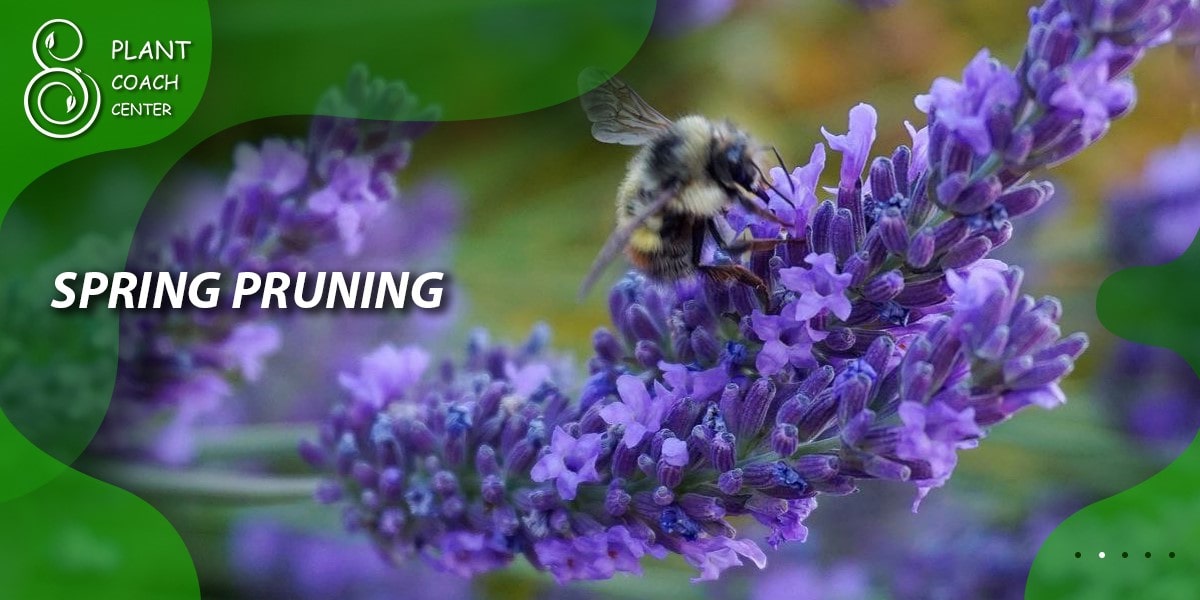
Spring Pruning
Spring is the season when English lavender comes alive with the promise of vibrant blooms and lush greenery. Pruning during this pivotal time is your ticket to a lavishly thriving plant.
Ideal Timing in Early to Mid-Spring:
The sweet spot for spring pruning typically falls within the window of early to mid-spring. This timing aligns with the lavender’s natural growth cycle, harnessing the plant’s inherent vigor as it emerges from its winter dormancy. Keep an eye out for the first signs of new growth, like tender green shoots and the emergence of buds.
Benefits of Spring Pruning:
Pruning your lavender during this period reaps numerous rewards, making it a springtime ritual worth embracing:
Stimulating New Growth: By trimming back your lavender in spring, you’re sending a clear signal to the plant that it’s time to put forth fresh, vibrant growth. This means more robust stems and a bushier, more visually appealing plant.
Preventing Woody Stems: Spring pruning is your frontline defense against the development of woody stems. These hardened, unproductive branches can result from neglecting spring pruning, making it vital for preserving the tender, aromatic qualities that lavender is cherished for.
Step-by-Step Spring Pruning Instructions:
Prepare Your Tools: Ensure your pruning shears or scissors are sharp and clean. Dull blades can damage the plant and lead to uneven cuts.
Identify Dead Growth: Start by identifying any dead or woody stems. These should be pruned at the base, where they meet the main stem or the ground. Remove them entirely to make space for new growth.
Shape and Size: To maintain the desired size and shape of your lavender, trim the outermost portions of the plant. Be mindful not to cut too deep into the woody core, as this can hamper new growth.
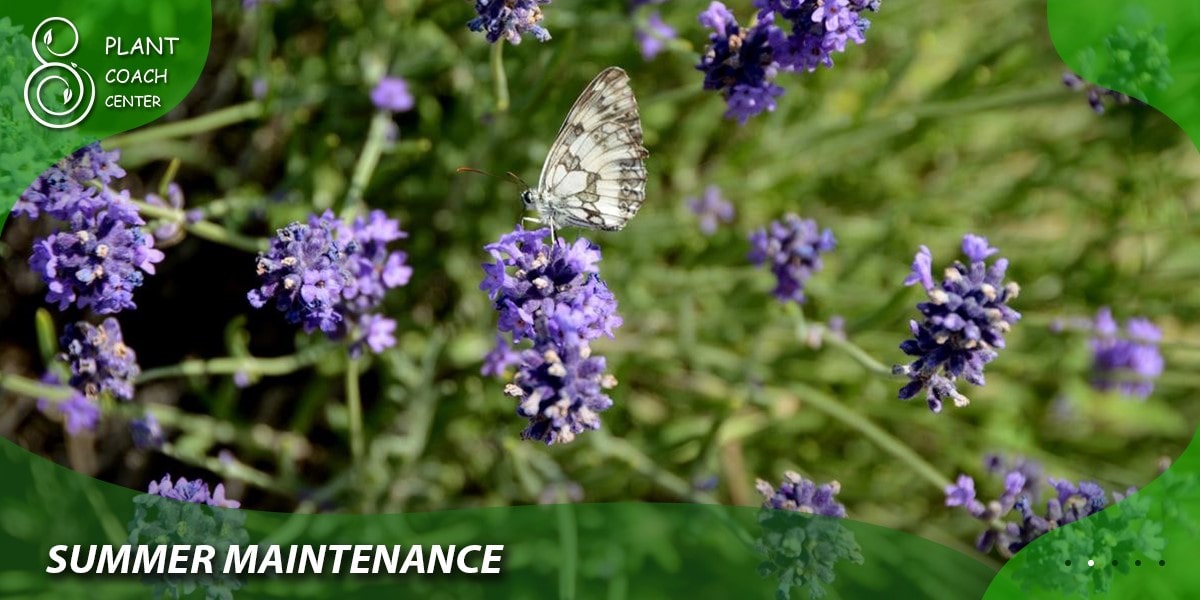
Remove Spent Blooms: If you have any remaining spent flower spikes from the previous year, now is the time to remove them. Trim them back to the point where new growth is emerging.
Prune Conservatively: While it’s tempting to prune lavishly, especially if your lavender is overgrown, avoid cutting too aggressively. A general rule of thumb is to never remove more than one-third of the plant in a single pruning session.
Collect Trimmed Material: Collect the trimmed lavender material and either compost it or dry it for culinary or aromatic use.
Water and Mulch: After pruning, give your lavender a good drink of water to help it recover and promote new growth. Adding a layer of mulch around the base of the plant can help retain moisture and suppress weeds.
Spring pruning is a rejuvenating experience for both you and your lavender. Done correctly, it sets the stage for a season filled with fragrant blooms and robust growth, ensuring your lavender remains a star in your garden.
Summer Maintenance
Summer is the season when your English lavender puts on its most impressive show, gracing your garden with its fragrant, vibrant blooms. While the heavy-duty pruning happens in spring, tending to your lavender during the summer is essential to maintain its shape, health, and visual appeal.
Importance of Light Summer Maintenance:
Maintaining your lavender’s shape and vitality during summer serves several crucial purposes:
- Encourages Continuous Blooming: Deadheading spent blooms and removing stray stems prompts your lavender to redirect its energy towards producing new flower buds. This means a longer-lasting display of those beloved lavender blossoms.
- Aesthetic Appeal: Regular upkeep during the summer keeps your lavender looking tidy and aesthetically pleasing. It prevents the plant from becoming unruly or overly leggy, which can detract from its beauty.
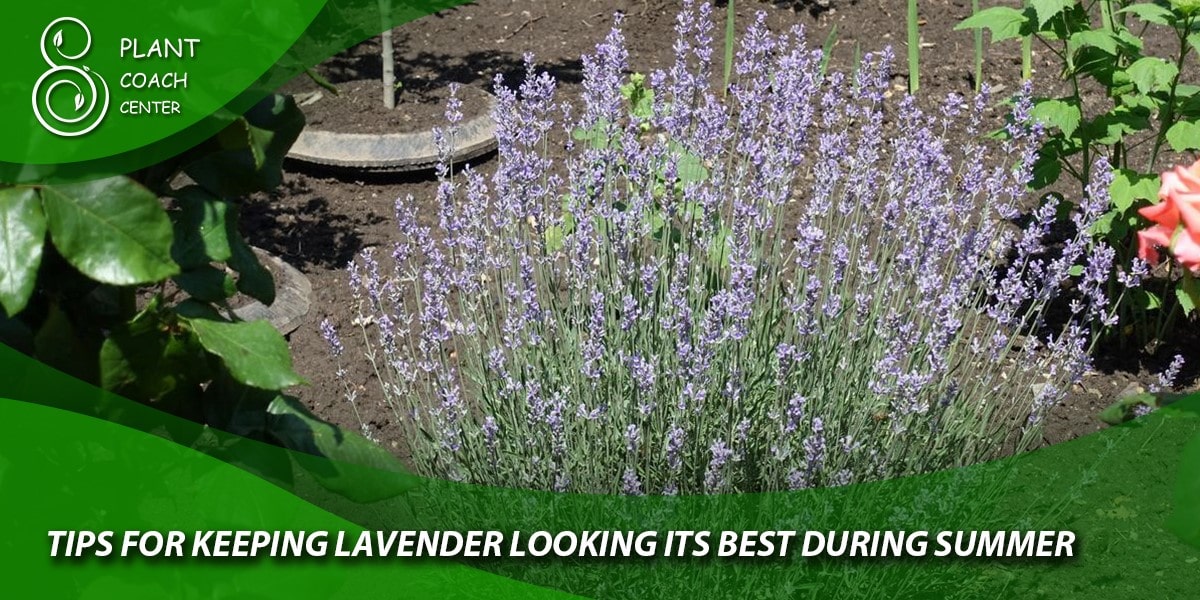
How to Deadhead Spent Blooms and Remove Stray Stems:
Inspect the Plant: Begin by closely examining your lavender. Look for faded or spent flower spikes—these are the ones that have turned brown and lost their vibrant color.
Pinch and Prune: Gently pinch the spent bloom near its base. Follow the stem down to where it connects with the main stem. Using clean, sharp scissors or pruning shears, make a precise cut just above a set of healthy leaves or a node.
Dispose of Debris: Collect the removed flower spikes and any stray stems you’ve pruned. Dispose of them properly, as these discarded parts can harbor pests or diseases if left in your garden.
Tips for Keeping Lavender Looking Its Best During Summer:
Regular Check-Ins: Take a few moments every week to inspect your lavender. This proactive approach allows you to catch spent blooms and stray stems early, ensuring your plant remains well-groomed.
Water Wisely: Lavender prefers slightly drier soil, so be cautious not to overwater during the summer. Water deeply but infrequently to prevent root rot.
Mulch Matters: Maintain a layer of mulch around the base of your lavender to conserve moisture, suppress weeds, and protect the roots from excessive heat.
Prune with Precision: While summer maintenance involves light pruning, remember not to overdo it. Focus on deadheading and removing strays to maintain the plant’s shape, but avoid extensive cutting, as this can stress the lavender during its peak growth season.
By practicing thoughtful summer maintenance, you’ll ensure your lavender remains a visual delight throughout the season, captivating both your eyes and your senses with its fragrant blooms and graceful form.
Fall Pruning (Optional)
Fall pruning, though not the norm for English lavender, can have its merits when applied judiciously. This optional practice comes into play for specific situations and deserves consideration in the context of your garden’s unique needs.
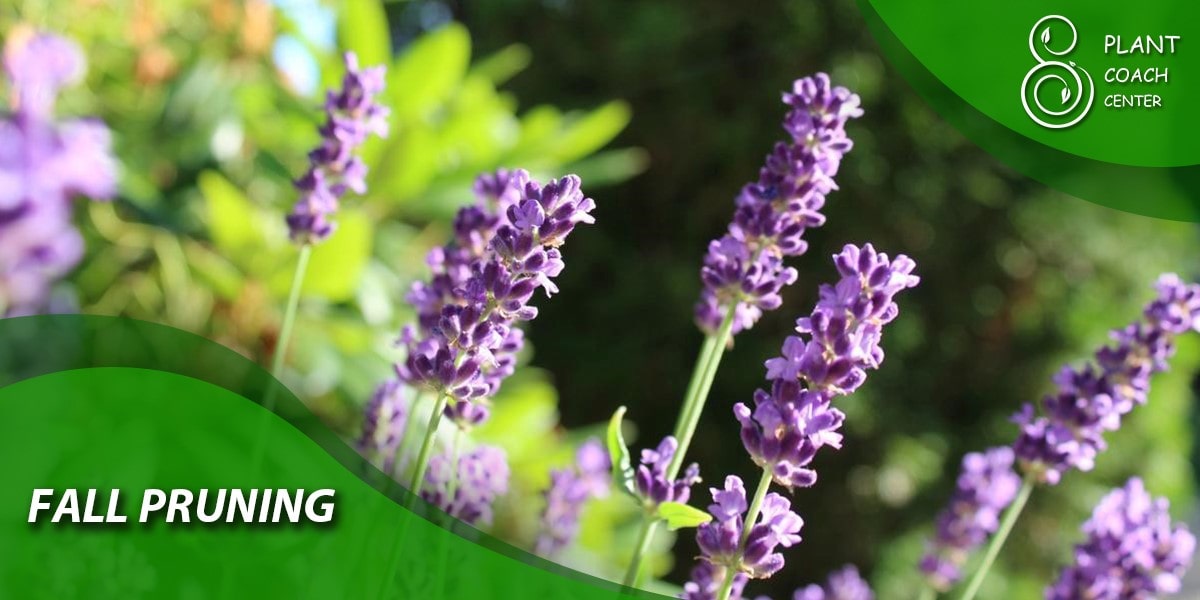
Introducing the Concept of Fall Pruning:
Fall pruning involves trimming your lavender as the growing season winds down and temperatures begin to drop. While not a universal necessity, it can be valuable under certain circumstances.
When Fall Pruning Might Be Necessary:
Colder Climates: In regions with harsh winters, fall pruning can help protect your lavender from the damage caused by freezing temperatures. By removing excess growth, you reduce the risk of snow and ice accumulating on the plant, which can lead to breakage.
Overgrown Lavender: If your lavender has become overly leggy or unruly during the summer, fall provides an opportunity for corrective pruning. This can help maintain the plant’s shape and size.
Guidelines for Fall Pruning:
If you’ve decided that fall pruning is right for your lavender, here’s how to go about it:
Wait for Dormancy: The best time for fall pruning is when your lavender has gone dormant, typically after the first frost. This is usually in late fall.
Light Trimming: Unlike the more substantial spring pruning, fall pruning should be lighter. Trim away any excessive growth, but avoid cutting too close to the woody base. Focus on shaping and maintaining the desired size.
Leave Some Growth: It’s essential to leave some green foliage on the plant. This will enable your lavender to photosynthesize and continue to draw nutrients from the sun during the winter months.
Dispose of Debris: Collect and dispose of the trimmed material to prevent the spread of diseases or pests during the winter.
Mulch and Protect: After pruning, add a layer of mulch around the base of your lavender to insulate the roots and protect them from harsh winter conditions.
Remember that fall pruning is not a one-size-fits-all approach. It’s an option to consider based on your climate and the specific condition of your lavender. If you reside in a milder climate or your lavender is healthy and well-maintained, you may find that spring and summer pruning suffice. However, for those in colder regions or with unruly lavender, fall pruning can be a valuable tool in your gardening arsenal.

Avoiding Winter Pruning
When it comes to pruning English lavender, one cardinal rule stands out: avoid pruning during the winter months. This rule isn’t arbitrary; it’s rooted in the essential needs and characteristics of the lavender plant.
Emphasizing the Importance of Avoiding Winter Pruning:
Winter Vulnerability: Lavender is particularly vulnerable during the winter when it enters a semi-dormant state. Pruning during this period disrupts the plant’s natural defense mechanisms and can weaken it significantly.
Cold Damage: One of the most significant risks of winter pruning is exposing tender, newly cut stems to freezing temperatures. Without the protection of the trimmed foliage, these exposed parts can suffer cold damage, leading to dieback or even death of the plant.
Reduced Resilience: Winter is a time when lavender relies on its existing growth to shield the plant from the elements. Pruning strips away this protective barrier, leaving it more susceptible to cold, frost, and pests.
Encouraging Readers to Wait Until Spring for Major Pruning:
Patience Pays Off: While it can be tempting to prune year-round, patience is the key to a healthy lavender plant. Waiting until spring, when the plant is naturally gearing up for a new growing season, ensures that your lavender can handle the pruning stress and bounce back vigorously.
Spring Renewal: Spring pruning stimulates the lavender to produce fresh growth, setting the stage for robust flowering and a thriving plant. It aligns with the plant’s natural growth cycle and ensures the best results.
Minimal Risk: Pruning in spring minimizes the risk of cold damage, as the plant will have time to recover and harden off before winter arrives. This timing strikes a balance between shaping your lavender and protecting it from potential harm.
In conclusion, winter pruning is a practice best left avoided when it comes to English lavender. Instead, embrace the rhythm of nature and wait until spring to undertake any major pruning efforts. Your lavender will thank you with vibrant growth, fragrant blooms, and resilience in the face of the changing seasons.
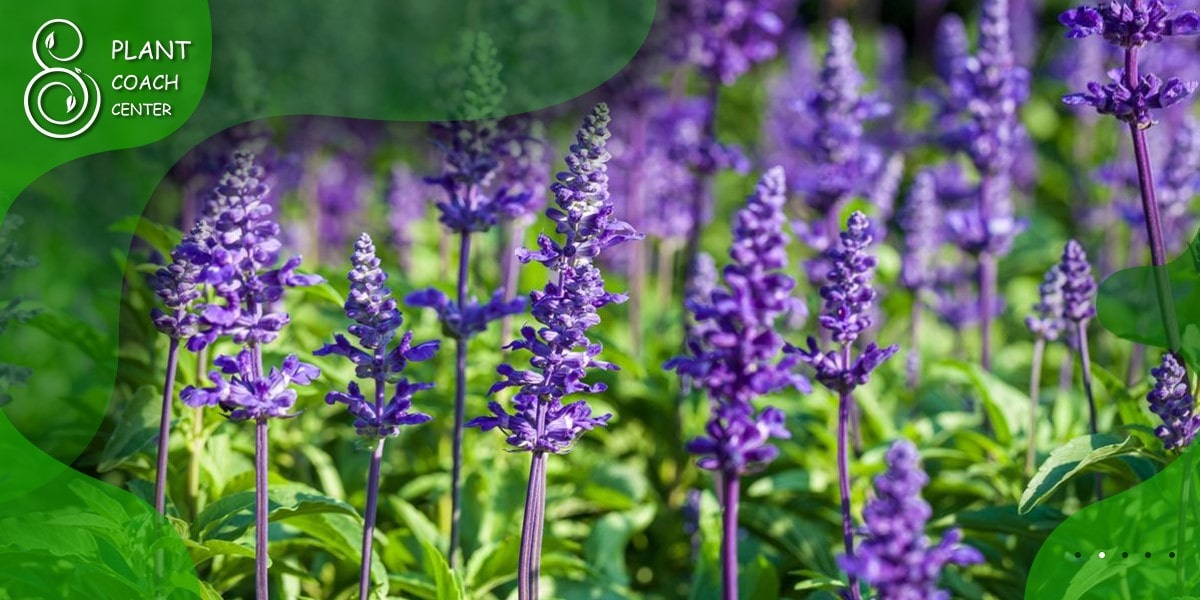
Conclusion
In summary, the timing of pruning for English lavender is a critical factor in ensuring the health and appearance of this beloved plant. Proper timing, such as pruning in early to mid-spring to stimulate new growth and prevent woody stems, plays a pivotal role. It aligns with the plant’s natural growth cycle, promoting lush, aromatic blooms and preserving its shape. Light summer maintenance, including deadheading spent blooms, keeps the lavender looking its best during the season of full splendor.
While fall pruning is optional and suitable for specific situations, winter pruning should be emphatically avoided due to the risk of cold damage and reduced resilience. To reap the rewards of a thriving lavender plant, we encourage readers to adhere to these timing guidelines diligently, embracing the beauty and fragrance that well-timed pruning brings to their gardens.
FAQs
When is the best time to prune English lavender?
Early to mid-spring is ideal.
Can I prune my lavender in the winter?
No, it's best to avoid winter pruning.
Why is spring pruning important?
It stimulates new growth and prevents woody stems.
What is the purpose of summer maintenance for lavender?
It maintains the plant's shape and prolongs blooming.
Is fall pruning necessary?
It's optional and suitable for specific situations.
What happens if I prune my lavender in the winter?
Pruning in winter can lead to cold damage and reduced plant resilience.


